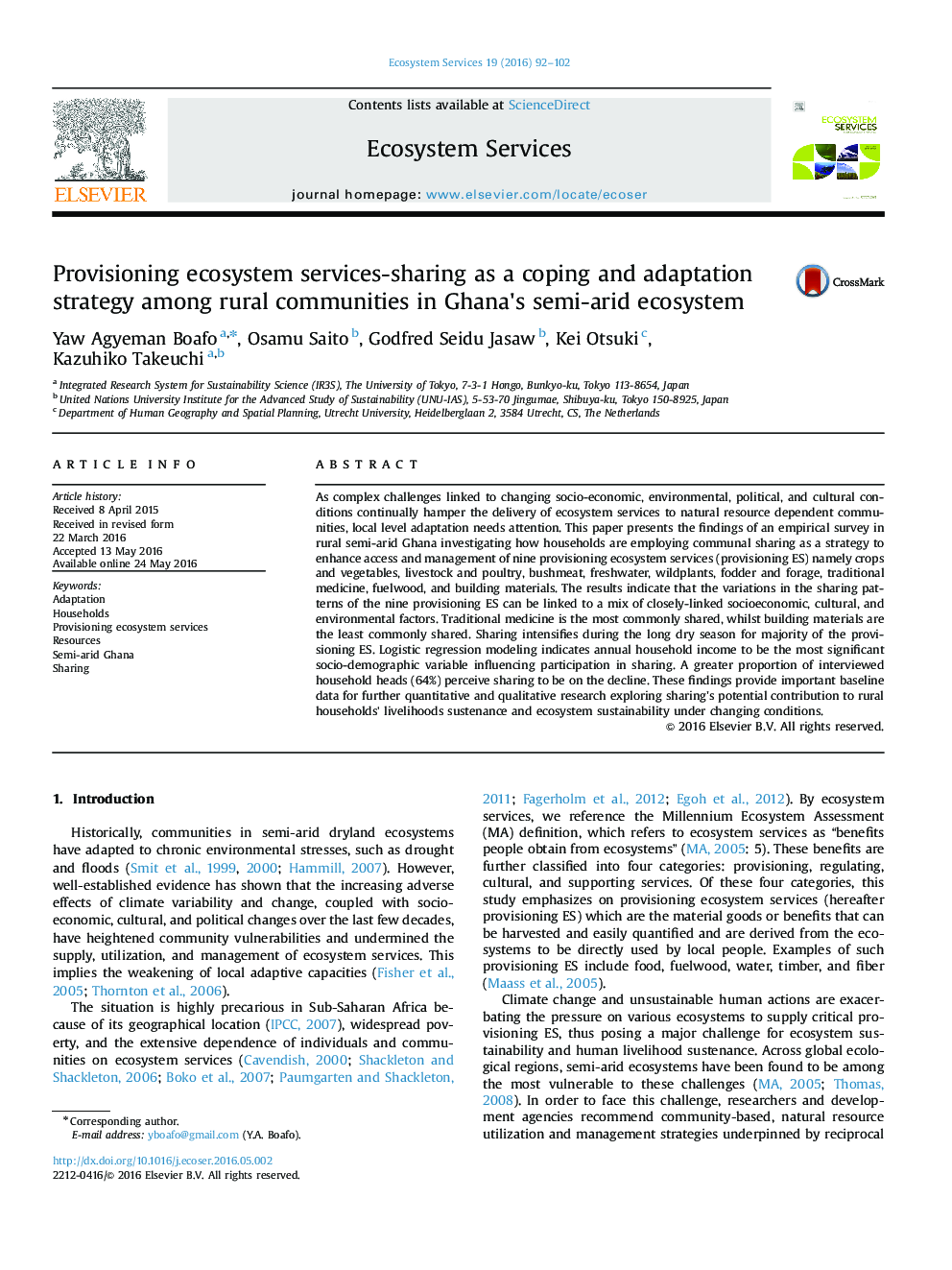| Article ID | Journal | Published Year | Pages | File Type |
|---|---|---|---|---|
| 108062 | Ecosystem Services | 2016 | 11 Pages |
•A qualitative and quantitative survey explores the communal practice of provisioning ecosystem services-sharing in rural semi-arid Ghana.•Sharing is perceived both as an adaptive and coping strategy under changing socio-ecological conditions.•Demographic variables generally have a weak influence on participation in sharing.•Provisioning ecosystem services-sharing patterns increases significantly during the dry season.•Additional research can enhance understanding and appreciation of sharing’s role in rural households’ livelihood sustenance.
As complex challenges linked to changing socio-economic, environmental, political, and cultural conditions continually hamper the delivery of ecosystem services to natural resource dependent communities, local level adaptation needs attention. This paper presents the findings of an empirical survey in rural semi-arid Ghana investigating how households are employing communal sharing as a strategy to enhance access and management of nine provisioning ecosystem services (provisioning ES) namely crops and vegetables, livestock and poultry, bushmeat, freshwater, wildplants, fodder and forage, traditional medicine, fuelwood, and building materials. The results indicate that the variations in the sharing patterns of the nine provisioning ES can be linked to a mix of closely-linked socioeconomic, cultural, and environmental factors. Traditional medicine is the most commonly shared, whilst building materials are the least commonly shared. Sharing intensifies during the long dry season for majority of the provisioning ES. Logistic regression modeling indicates annual household income to be the most significant socio-demographic variable influencing participation in sharing. A greater proportion of interviewed household heads (64%) perceive sharing to be on the decline. These findings provide important baseline data for further quantitative and qualitative research exploring sharing's potential contribution to rural households’ livelihoods sustenance and ecosystem sustainability under changing conditions.
